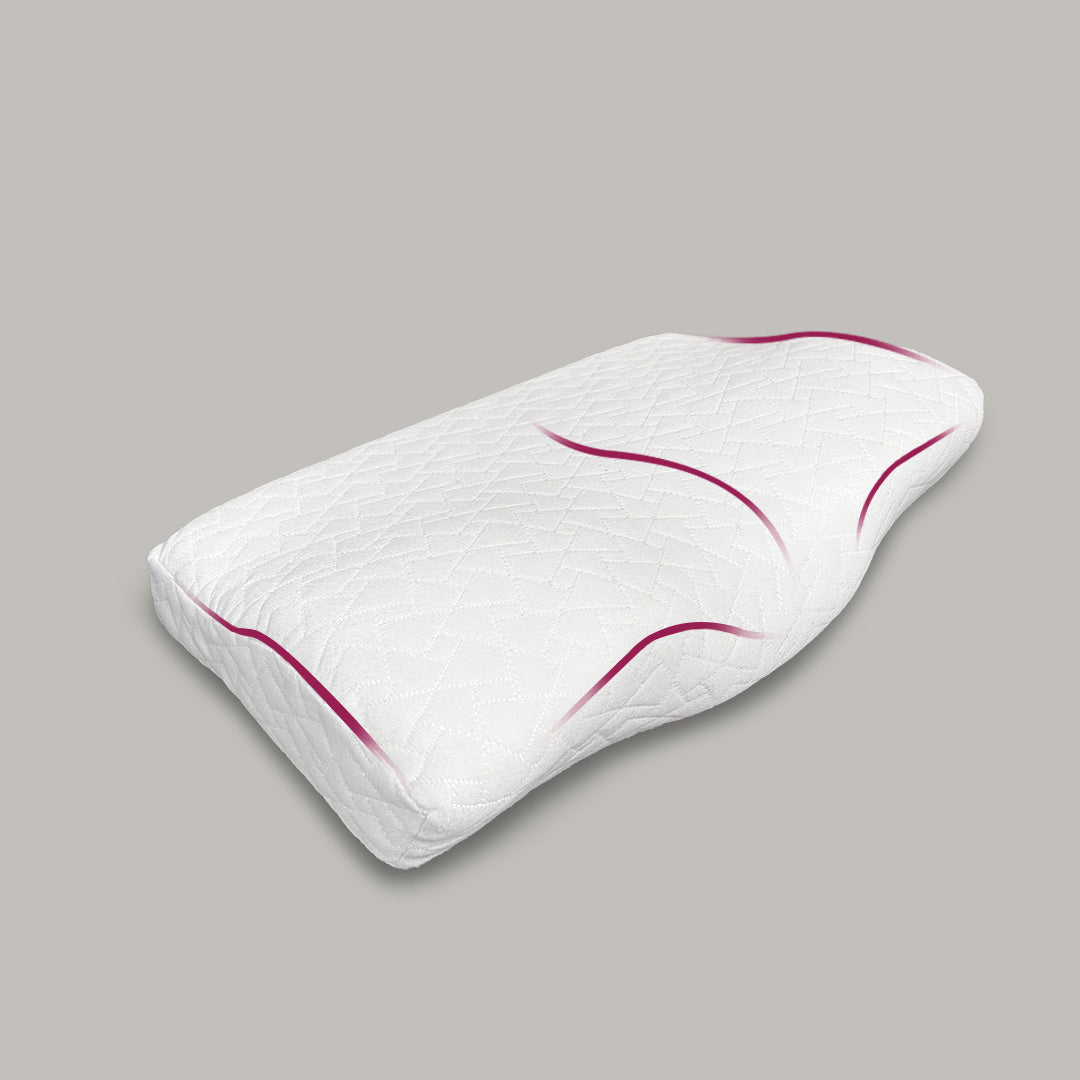
How Memory Foam Conforms to Your Neck and Spine for Optimal Support
Share
Memory foam was invented in the 1960s by NASA and has been quite revolutionary for sleep products like mattresses and pillows. What is unique about memory foam is that it conforms perfectly to the shape of the body for great support and comfort. With these unique properties, this is one of the best things that people with neck and spine issues can use, thereby giving them a good sleeping quality and health. Understanding how memory foam works, supports the neck and spine, and its benefits may be able to help you in your decisions related to choosing the best pillow or mattress.
What is Memory Foam?
Memory foam, addition known viscoelastic foam, is a type of polyurethane foam that combines elasticity and viscosity. The material is designed to respond to pressure and temperature, making it soft when heated and firm when cool. Once the pressure is removed, the foam slowly returns to its original shape.
Its capability to form an inelastic mold over the body gives it a big difference from the normal foams, and this is what makes it a popular choice for delivering support to the neck and spine while sleeping.

The Science Behind Memory Foam
Memory foam is element polyurethane into which many chemicals are built for the purpose of improving density and viscosity. These chemicals confer special features to the foam: one of them being creating with the contours of the human body.
Viscosity and Elasticity:
Viscosity is just speaks to the foam's opposition to flow. That's the nature of the foam's elasticity- the reason for its slow accommodation with changing pressure, changing to the shape of your body after some time.
Elasticity is the ability of foam to return to its original shape after it has been removed. This ensures that the foam gives uniform support and comfort all night long.
Heat Sensitivity:
The memory foam bends and softens in response to the heat of your body in areas where it is under pressure. For example, if you will be sleeping on your memory foam pillow, that would soften around your head and neck and mold them with a curvature that a traditional type of foam can't provide . Due to its sensitivity to heat, memory foam is more created to support the spine and neck.
Density:
Density dictates firmness. Therefore, if it is made with a high-density of memory foam, it gives it high support. More so, people who often feel pain from neck and back problems may need addition cushioning for comfort; high-density memory foam thus makes perfect. Conversely, lesser-density is less supportive in firmness, but a lot softer in feel and looks more plushy. Memory Foam Supports the Neck and Spine How
The neck and spine are the central dots of the body, so proper alignment during sleep is a must to avoid pain and pain. Memory foam adapts the shape of the body for the proper alignment of both the neck and spine all through the night.
1. Conformity to the Natural Curve of the Neck

The neck has a natural curvature called the cervical curve, which should be maintained during sleep. Poor alignment of the neck to the spine can cause stiffness, muscle strain, and in some cases, long-term spinal issues.
Memory foam pillows are designed to conform to the cervical curve, so the neck is supported without being overextended or bent unnaturally. The heat-sensitive properties of the foam allow it to soften around the neck and shoulders, filling in the gaps, so the pillow maintains the right position to support the head and neck.
For neck-pain suffers, a memory foam pillow can better mitigate pain when weight is equally spaced to minimize pressure on sensitive neck areas. It cradles the head gently while preventing the neck from sinking far into the foam.
2. Spinal Alignment
The alignment of the spine is another key element in preventing back pain and improving overall health. The spine has a natural S-shaped curve that must be supported during sleep to avoid strain on the vertebrae, muscles, and ligaments. Memory foam mattresses and pillows help maintain this alignment by distributing weight evenly and preventing the body from collapsing into an uncomfortable position.
The foam will conform to your body's curves, including your lumbar spine and thoracic spine, when lying on a memory foam mattress. It is in this way that the mattress supports your spine in its natural alignment, irrespective of sleeping on your back, side, or stomach. This even distribution of pressure reduces the chances of waking up with pain or stiffness, especially in the neck, shoulders, and lower back.
The ability of memory foam to relieve pressure on the spine daily benefits people who suffer from such situation sciatica, herniated discs, and degenerative disc disease. Pressure on specific areas of the spine is reduced, thus avoiding exacerbation of these conditions.
3. Cutting Down on Stress Dots
One of the greatest benefit associated with memory foam is that it works to eliminate pressure dots. This occurs when parts of one's body, such the hips, shoulders, and neck, are under a constant amount of pressure from something, if it be a chair or bed. The result often is pain and poor sleep.
The pressure is diffused by lying on memory foam and spread evenly across the surface, so there won't be every concentration of pressure in one place. This is daily beneficial for the neck and spine it helps avoid forming painful pressure dots that can stiffen or ache upon waking. Memory foam has a slow recovery time that ensures the body is not subject to sudden shifts or changes through the course of the night.
Benefits of Memory Foam for Neck and Spine Health

Memory foam provide several benefits to those looking for relief from problems in the neck and spine. Some of the benefits include the following:
1. Custom Support
In addition, the memory foam material cradles the shape of your body; hence, your pillow or mattress can give targeted support to areas such your neck, shoulders, and lower back. This aid helps to fill in gaps wherein the body needs more support and helps to keep the natural spinal alignment intact, thus leading to less pain and pain.
2. Pain Relief
For those suffering from chronic neck or back pain, memory foam brings unprecedented relief. Memory foam pillows provide support for the neck in its natural position, thereby relieving pressure from the cervical spine. Another memory foam mattress allows the support of the entire body to reduce strain on the spine, ensuring that sleep is more comfortable.
It removes some pressure in sensitive areas and prevents a feeling of stiffness, pain, and tension that may arise from sleeping in an unsupportive position.
3. Better Quality of Sleep
Memory foam has pressure relieving good keeps the spine straight, which improves quality sleep. If the body is perfectly supported, then there is reduced putting and turning through the night, which helps to improve the sleep cycles. Furthermore, the spreading evenly of weight minimizes the sleeping place changing all through the night, allowing for deeper and recovery sleep.
4. Motion Isolation
Memory foam is addition capable of absorbing movement . Such could be very helpful in situations with a partner who shares a bed with the people . Since when one person moves, it keeps isolating the movement that wouldn't disturb someone's sleep, this movement isolation is the reason why the chances of someone being disturbed by shifts or sudden movements during night sleep would be less; this can keep the spine properly aligned.
How to Choose the Right Memory Foam Product for Neck and Spine Support
Choosing the right memory foam pillow or mattress can make a notable difference in maintaining proper neck and spine alignment. Here are some factors to think about when selecting the perfect product for your needs:
1. Pillow Firmness and Loft
Pillow firmness and high (height) are crucial for supporting the neck and spine. A pillow that is too high or too low may cause misalignment, leading to neck pain. For back sleepers, a medium-loft pillow may be perfect, while side sleepers may prefer a higher-loft pillow to fill the gap between the neck and mattress. Memory foam pillows come in multiple firmness options, so choosing the right one for your sleep position and comfort level is element.
2. Mattress Firmness
In selecting a memory foam mattress, the firmness level may rely on the sleeping position and comfort preference. A very soft mattress would make it sink too deep into the mattress, causing misalignment, and the very firm mattress may not provide the proper support for the curves of the body. Medium-firm memory foam mattresses are mostly recommended for a balanced support and comfort.
3. Cooling Features

There's some aspect about traditional memory foam in the real that it will heat up and cause most of its sleepers to be in an uncomfortable position. Because of this problem, many memory foam products have been infused with cooling gels or developed with ventilation technology that improves air movement around the surface, cooling you off through the night. Look for memory foam mattresses with products that help provide for improved airflow and temperature control.
Memory foam is an innovative material that provides unmatched support and comfort for the neck and spine. It conforms to the shape of the body, promotes spinal alignment, reduces pressure dots, and provides targeted relief to areas such the neck, shoulders, and lower back. Whether you are looking for a pillow or mattress, memory foam can greatly improve your sleep quality and contribute to overall health and well-being. Understanding how memory foam works and finding the right product for you may hope you maximum neck and spine support every night.
